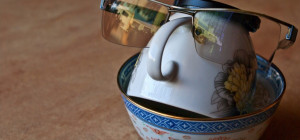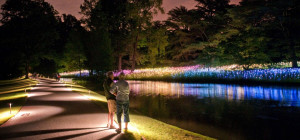Sculpture encompasses modern metallic abstracts, ancient statues and the things in between. Regardless of personal taste, you are bound to find forms that appeal to you.
Photographing sculptures should be easy since they don't move. However, finding the best and unique ways to capture a sculpture can be quite challenging.
Let's check out on a few ways to get the best pictures of statues, sculptures as well as other works of art around you.

Include your Perspective
One of the most significant questions that you need to ask yourself while photographing a sculpture is whether you would like to capture the vision of the artist, that is, click the work of art as accurate as possible or you want to capture it in a way that showcases your perspective.
No doubt, both of these approaches have a place of its own but, I personally prefer to include my own perspective. In the absence of your own perspective, you are left with a photo, that is the snapshot of just someone else's perspective.
Before you take the picture of a sculpture, make sure that you spend some time studying it. Wait before you finally take out your camera. Examine the sculpture from multiple angles and find out the features that stand out or interest you. Now, you can base your composition around that.
Don't be afraid of using a different camera angle, like taking the picture, lying down on the ground. You need not capture the sculpture in full either. You can zoom in a given area and crop everything else.
Check Out on the Weather
Nothing can beat the overcast skies. Cameras can never cope with the light and shadow contrasts that Sun makes on bright white marble or polished bronze. If the day is a sunny one, find a sculpture that is completely in shadow. You may need to shoot in the afternoon rather than morning or vice versa. You may also need to wait till a building casts a shadow over the sculpture.
Concentrate on the Look
A good angle for shooting sculptures is as vital as it is while clicking a portrait of an individual. Take a walk around the sculpture and find out the interesting angles before you get sidetracked by exposures and apertures. Just the face, a profile view or ¾ view looks much more interesting than full shots.
Zoom Properly
Most sculptures are on pedestals. So don't stand close while shooting. Go back as much as you can and use the optical zoom to fill the frame. If possible, you can stand on a bench. This will bring your eye level close to the sculpture.
Use Lights to Add Perspective and Depth
The statues and sculptures are three dimensional. The lights can enhance or detract this, depending upon the way you choose to build the picture. For attractive and even lights, you can use the morning or evening lights when it hits the statue from the sides or the front. Remember that shadows and overall character tend to vary. If you can't find a time good enough to capture the sculpture from a requisite angle, you can consider bringing a few lights.
Focus on Details
The real interest in sculptures lies in details. While evaluating a subject, look as closely as possible. Find out whether there are areas with interesting texture or details that deserve more attention. Use the artist's eye to determine if there is any aspect of your photography that can stand out on its own. This separates the true professionals from the amateurs.
Process Properly for Best Results
Photoshop is certainly not cheating when the outdoor works of art come under concern. You may not always get all the aspects of photography as you want. This adds up to the value of processing.
You can add or take away lights, increase or decrease shadows or make your background disappear completely.
If clicking a sculpture, keep your patience and go on trying again and again. In most cases, the best pictures were not impromptu ones but planned operations. If you really want the best, you may need to return to the area several times trying different settings. Take a look at the prints, evaluate the mistakes and try to correct them. You will soon be rewarded with the best possible picture of the sculpture.







